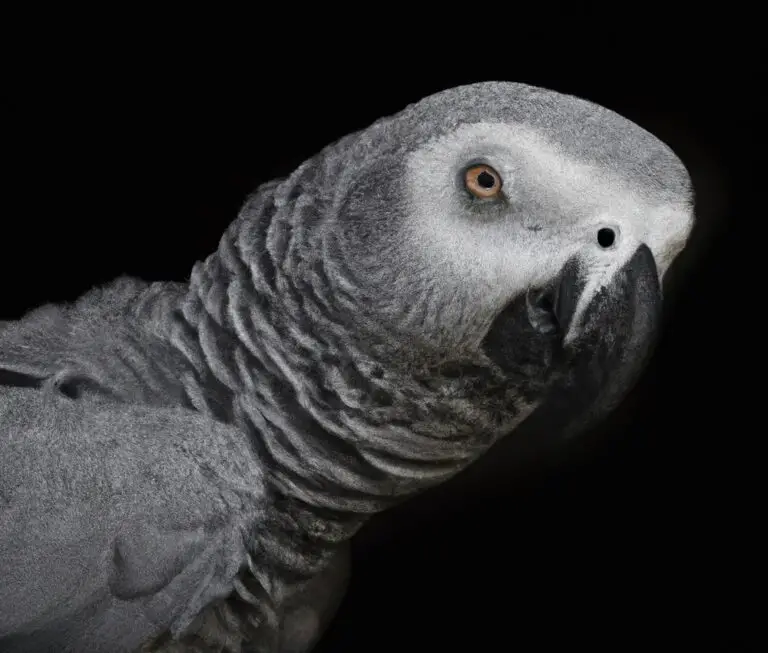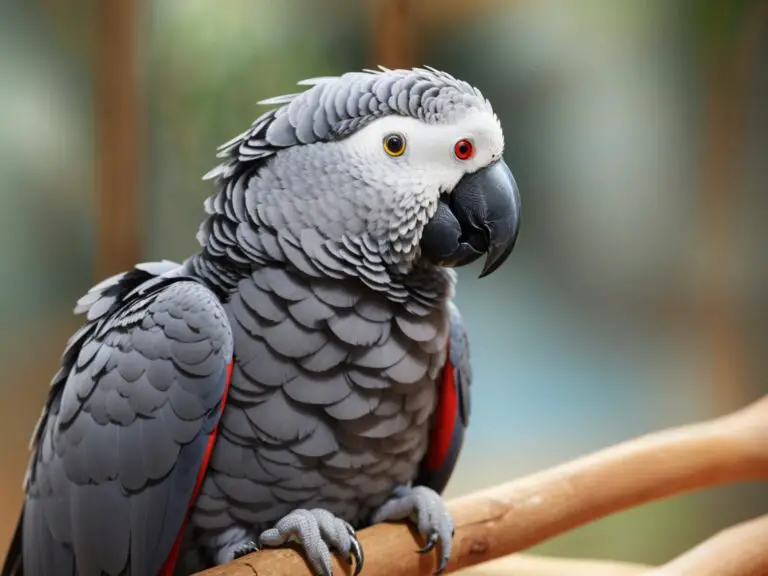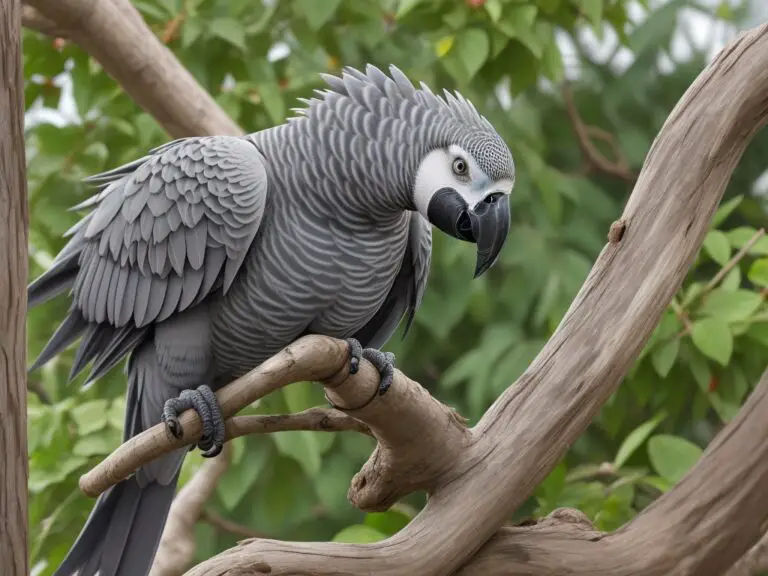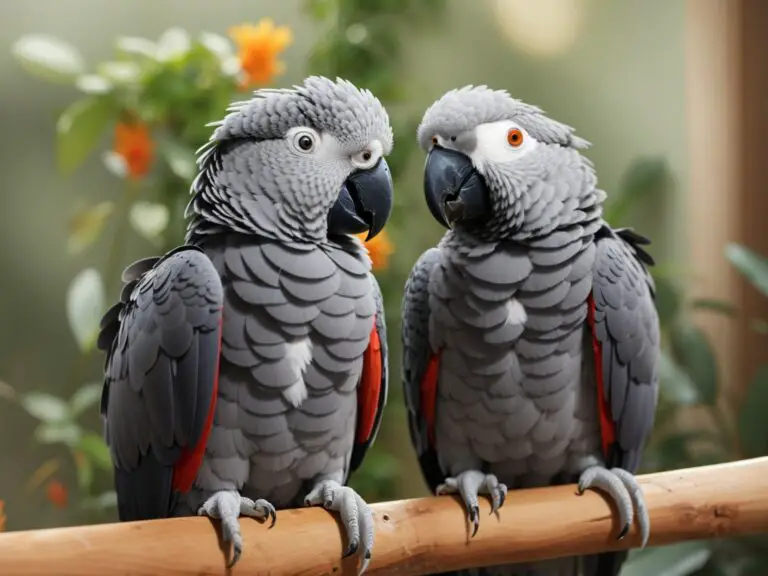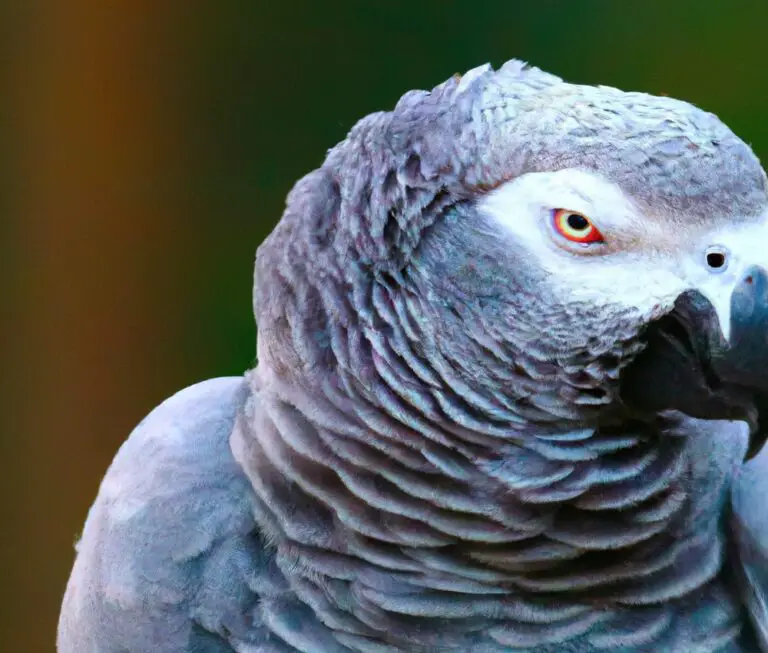How Do African Grey Parrots Navigate In The Wild?
Key Takeaways:
- African Grey Parrots use visual landmarks to navigate in their natural habitat.
- These parrots also have a strong memory that helps them remember specific routes and locations.
- African Grey Parrots can navigate long distances by using the position of the sun as a compass.
- The ability to navigate in the wild is an important survival skill for African Grey Parrots.
Picture this: A vibrant rainforest, teeming with life and filled with the rhythmic sounds of nature.
Among the kaleidoscope of colors and melodic calls, there is a magnificent bird soaring through the dense foliage – the African Grey Parrot.
With its striking plumage and intelligent eyes, this fascinating creature is not only known for its incredible mimicry and cognitive abilities, but also for its remarkable navigation skills in the wild.
How do these parrots find their way through the vast expanses of their natural habitat?
Join me as we explore the sensory abilities, navigational strategies, and migratory behaviors of these captivating avian navigators.
| Navigation Method | Description |
|---|---|
| Magnetic Field Detection | African Grey Parrots are believed to have the ability to detect and navigate using the Earth’s magnetic field. They have magnetite in their beaks, which enables them to sense these magnetic fields. |
| Landmarks and Visual Cues | These parrots rely on visual cues, such as familiar landmarks, to navigate their surroundings. They are known to have excellent spatial memory and able to remember locations of food sources or nesting sites. |
| Sun Position and Celestial Navigation | African Grey Parrots may also use the position of the sun and other celestial bodies for navigation. They can assess the angle of the sunlight and use it as a reference point to determine their direction. |
| Social Learning | Young African Grey Parrots learn navigation skills from their parents or flock members. They observe and imitate the navigation behavior of experienced individuals, gradually acquiring the ability to navigate effectively in the wild. |
Overview of African Grey Parrots
African Grey Parrots are highly intelligent birds known for their exceptional talking abilities and social nature. They are native to the rainforests of West and Central Africa.
Physical Characteristics of African Grey Parrots
African Grey Parrots are medium-sized birds known for their striking appearance.
They have a predominantly grey plumage with a hint of white and red on their tail feathers.
These parrots have a large, powerful beak that is perfect for cracking nuts and seeds.
They also have bright, intelligent eyes and strong feet that allow them to climb and manipulate objects with ease.
With their sleek bodies and long, graceful wings, African Grey Parrots are truly captivating creatures to behold.
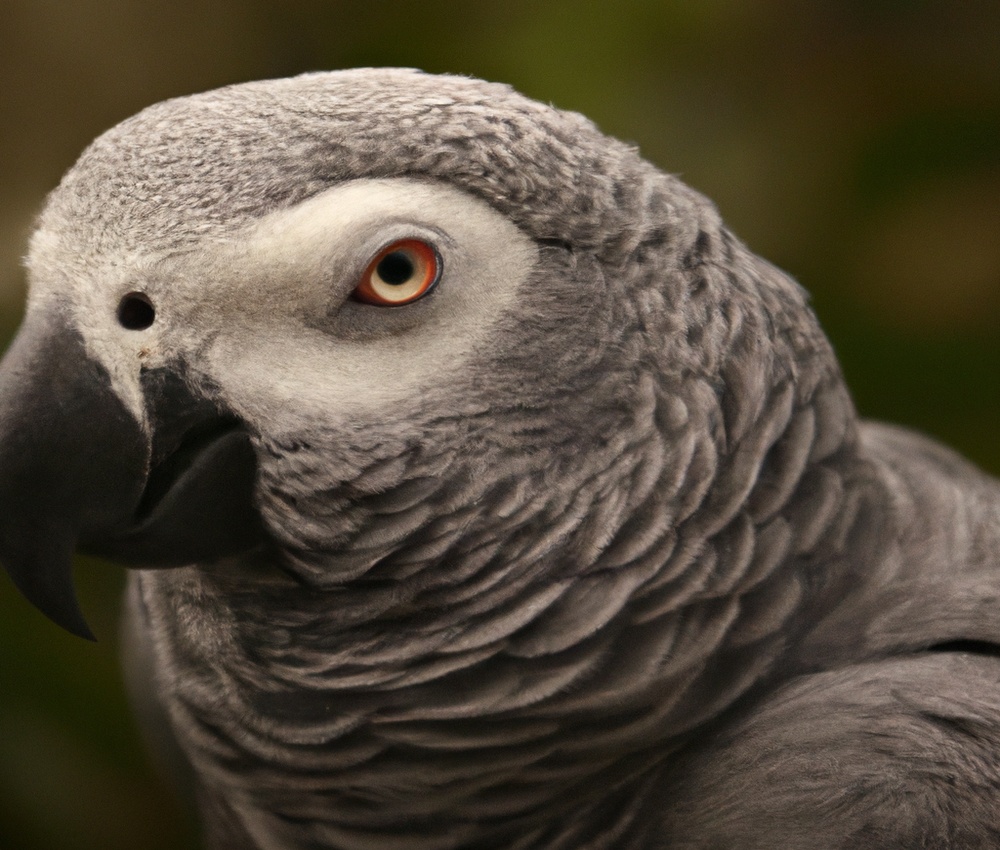
Habitat and Distribution of African Grey Parrots
African Grey Parrots are native to the dense forests of West and Central Africa, including countries like Ivory Coast, Ghana, Cameroon, and Congo. They primarily inhabit lowland rainforests, where they can find abundant food sources like fruits, nuts, seeds, and leafy vegetation.
These parrots are highly adaptable and can also be found in forest edges and savannahs.
However, due to habitat loss and deforestation, their populations are becoming increasingly fragmented, making their distribution more limited.
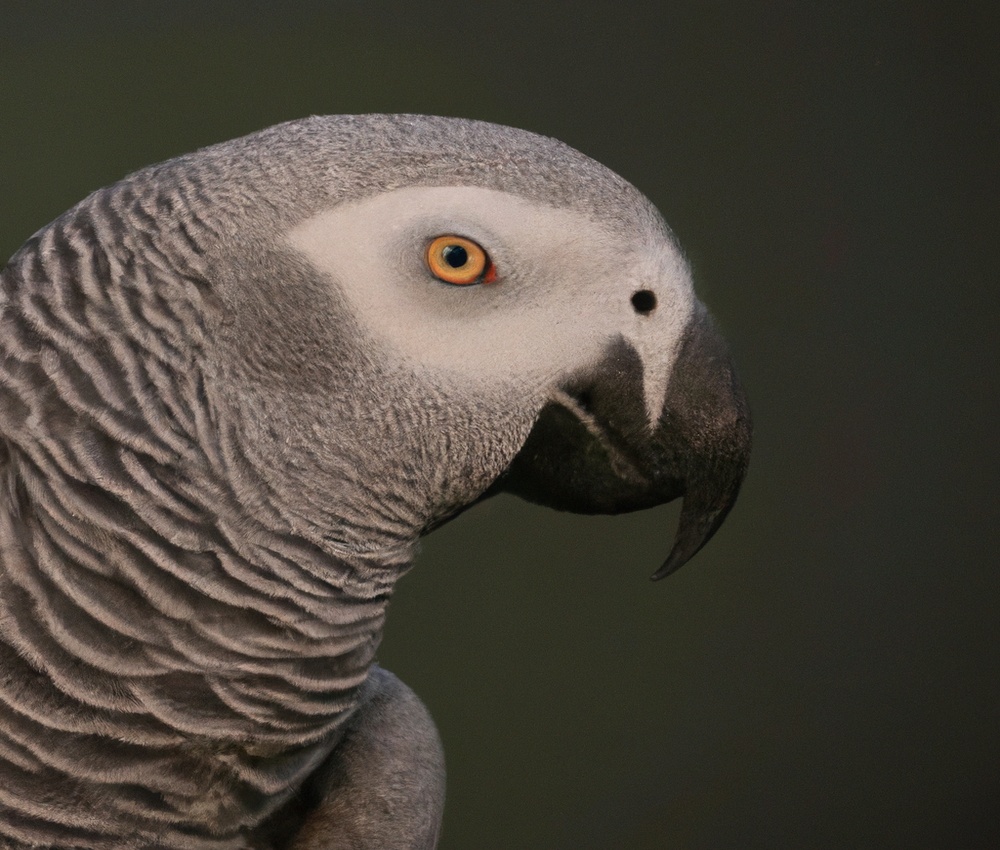
Importance of Navigation in the Wild
Navigation is crucial for African Grey Parrots in the wild as it helps them find food, water, and suitable habitats. They rely on their visual perception, auditory skills, and cognitive abilities to navigate through their surroundings.
Navigational strategies like landmark-based navigation and sensitivity to the Earth’s magnetic field ensure their survival.
Migration patterns and social navigation also play a role. Deforestation, climate change, and illegal wildlife trade threaten their navigation abilities, making conservation efforts essential.

Sensory Abilities of African Grey Parrots
African Grey Parrots have impressive sensory abilities that allow them to navigate their environment effectively.
They rely on their visual perception, auditory skills, and cognitive abilities for problem-solving.
Visual Perception in African Grey Parrots
African Grey Parrots have remarkable visual perception. Their sharp and keen eyesight allows them to see fine details and colors with great accuracy.
They can perceive different shapes, sizes, and patterns, which helps them navigate their environment and identify food sources and potential threats.
This visual acuity is crucial for their survival in the wild, as it enables them to spot predators and forage for food efficiently. With their impressive vision, African Grey Parrots are well-equipped to thrive in their natural habitats.
Auditory Skills of African Grey Parrots
African Grey Parrots have excellent auditory skills. They are known for their ability to mimic human speech and various sounds.
They can imitate different voices, tones, and even musical tunes.
They use their keen sense of hearing to communicate with other parrots and understand their surroundings. This remarkable auditory ability is one of the reasons why African Grey Parrots are highly sought after as pets and admired for their intelligence.
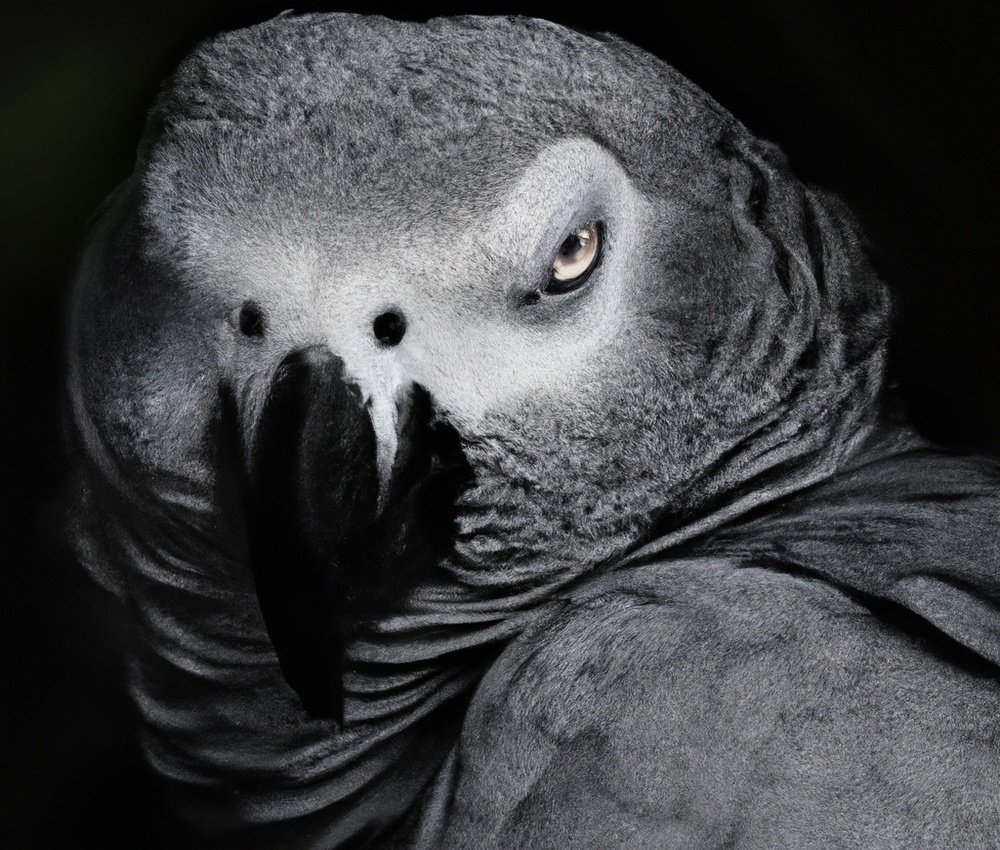
Cognitive Abilities and Problem Solving Skills
African Grey Parrots are known for their exceptional cognitive abilities and problem-solving skills.
They possess a high level of intelligence and are capable of learning complex tasks.
These birds have an excellent memory, which enables them to remember specific details and solve puzzles.
They can also demonstrate logical reasoning and understand cause-and-effect relationships.
African Grey Parrots have the ability to use tools and have been observed using sticks to retrieve food.
Their problem-solving skills make them adaptable to different situations and allow them to navigate their surroundings effectively.
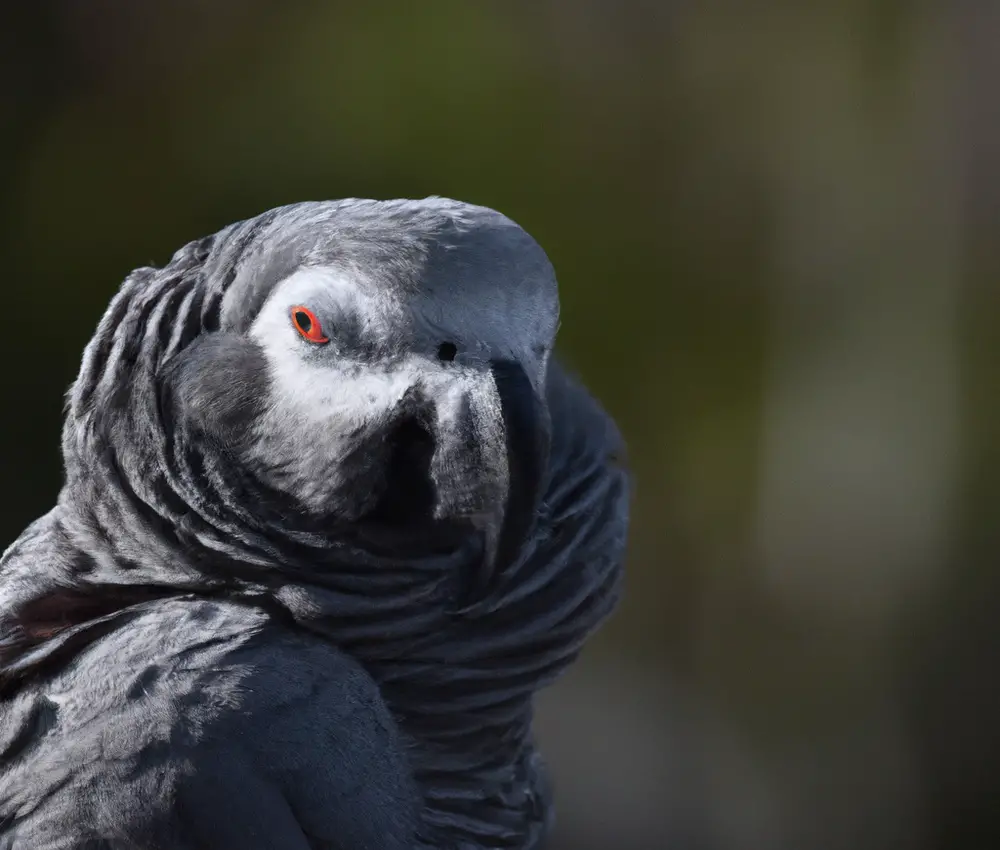
Navigational Strategies of African Grey Parrots
African Grey Parrots use landmark-based navigation, magnetic field sensitivity, sun orientation, and vocalizations to navigate in the wild.
Landmark-Based Navigation
Landmark-Based Navigation is one of the key strategies used by African Grey Parrots to find their way in the wild. They rely on recognizing and memorizing distinctive landmarks such as trees, rocks, or other prominent features in their environment.
This helps them navigate and locate food sources, water, and safe roosting spots.
African Grey Parrots have excellent visual memory and can recall the locations of these landmarks over long distances. They are able to use this information to navigate accurately and efficiently in their natural habitats.
Magnetic Field Sensitivity
African Grey Parrots possess a unique sensory ability known as magnetic field sensitivity. This means they can sense Earth’s magnetic field and use it for navigation.
By detecting subtle changes in the magnetic field, they can determine their position and orient themselves in their environment.
This skill allows them to navigate accurately over long distances, even in unfamiliar areas. It is still not fully understood how they perceive and use this magnetic information, but it is a fascinating and essential aspect of their remarkable navigation abilities.
Sun Orientation
Sun orientation is an important navigational strategy used by African Grey Parrots.
These intelligent birds have the ability to perceive the position of the sun in the sky, which helps them determine their heading and direction of travel.
By keeping track of the sun’s movement throughout the day, they can maintain a consistent course and find their way back to familiar locations.
Sun orientation is just one of the many fascinating abilities that enable African Grey Parrots to navigate successfully in their natural habitats.
Vocalizations and Communication for Navigation
African Grey Parrots use vocalizations and communication as important tools for navigation in the wild. They have a wide range of vocalizations, including different calls and mimicry of other species.
These vocalizations help them communicate with their flock, establish territory boundaries, and locate food sources.
They can even imitate human speech and mimic environmental sounds, which assists them in recognizing various landmarks and navigation cues. By using vocalizations, African Grey Parrots can navigate through their habitat and maintain social connections with other members of their species.
Migratory Behaviors of African Grey Parrots
African Grey Parrots exhibit migratory behaviors. Migratory Behaviors of African Grey Parrots
Understanding Migration Patterns
Migration patterns in African Grey Parrots refer to their seasonal movements and behaviors as they move between different areas in search of food, breeding grounds, or favorable habitats. These patterns can be quite complex and are influenced by various factors such as climate, habitat availability, and social dynamics within a flock.
African Grey Parrots are known for their ability to navigate over long distances using a combination of visual, auditory, and cognitive skills.
They rely on landmark-based navigation, which involves recognizing and memorizing specific geographical features along their route. They also have the ability to detect and navigate using the Earth’s magnetic field, allowing them to maintain a consistent heading even in the absence of visual cues.
Sun orientation is another important strategy that they use, as they can determine their direction based on the position of the sun.
Additionally, vocalizations and communication play a role in their navigation, as they use specific calls to coordinate their movements within a flock. It is important to understand these migration patterns in order to protect and conserve African Grey Parrot populations, as habitat loss, climate change, and illegal wildlife trade can disrupt their navigational abilities and impact their survival.
Conservation efforts focus on protecting and restoring their natural habitats and raising awareness about the importance of preserving these intelligent and remarkable birds.
Seasonal Movements and Predictability
African Grey Parrots exhibit seasonal movements, particularly in response to changes in their habitat and food availability. They tend to follow predictable patterns and migrate between different areas.
These movements are influenced by factors such as weather conditions, resource availability, and breeding cycles.
The predictability of their movements allows researchers and conservationists to track and monitor their populations effectively.
Social Navigation and Group Dynamics
African Grey Parrots exhibit strong social navigation and rely on group dynamics for their survival.
They often form flocks with other parrots, enabling them to share information about food sources, potential threats, and suitable nesting sites.
In these flocks, individuals take turns leading the group during long-distance flights, demonstrating cooperative decision-making.
By working together, African Grey Parrots enhance their navigation abilities and increase their chances of success in the wild.
Factors Influencing Navigation in African Grey Parrots
Factors Influencing Navigation in African Grey Parrots include habitat loss, climate change, and challenges faced in captivity.
Impact of Habitat Loss and Deforestation
The impact of habitat loss and deforestation on African Grey Parrots is significant. When their natural habitats are destroyed, these birds lose their homes and sources of food.
This can lead to a decline in their population and even extinction.
Additionally, deforestation disrupts the delicate balance of ecosystems, affecting other species as well. It is crucial to protect and restore the habitats of African Grey Parrots to ensure their survival and the conservation of biodiversity.
Climate Change and Disrupted Navigation
Climate change can have a significant impact on the navigation abilities of African Grey Parrots. One major way it affects them is through disruptions in their food sources.
As temperatures and weather patterns change, the availability and distribution of fruits, nuts, and other essential foods can be altered.
This can make it more challenging for the parrots to find and navigate to their preferred foraging areas. Additionally, climate change can lead to changes in vegetation and habitat composition.
This alters the visual landmarks that the parrots rely on for navigation.
If the familiar landmarks disappear or are altered, the parrots may struggle to accurately navigate their surroundings. Furthermore, climate change can affect the migratory behaviors of African Grey Parrots.
As their traditional migration patterns are disrupted, they may encounter unfamiliar routes, unpredictable weather conditions, and unfamiliar landscapes.
These changes can hinder their ability to navigate effectively and can potentially lead to lost individuals or populations. It is important to note that more research is needed to fully understand the specific impacts of climate change on the navigation abilities of African Grey Parrots.
However, it is clear that climate change poses significant challenges for these birds and their ability to navigate in the wild.
Conservation efforts to mitigate climate change and protect their habitats are crucial for their survival and navigation skills.
Captivity and Navigation Challenges
Captivity poses significant challenges for the navigation abilities of African Grey Parrots. Being kept in confined spaces limits their natural instinct to explore and navigate their surroundings.
Lack of exposure to different landscapes and landmarks hampers their ability to develop and utilize landmark-based navigation strategies.
Additionally, the absence of key environmental cues like the sun’s position and magnetic fields can disrupt their ability to orient themselves. Limited opportunities for long-distance flights and social interactions also affect their migratory behaviors and group dynamics.
Human Interaction and Conservation Efforts
Conservation organizations play a key role in promoting human interaction and conservation efforts for African Grey Parrots.
The illegal wildlife trade and habitat loss are major challenges that need to be addressed in order to protect these birds.
Role of Conservation Organizations
Conservation organizations play a vital role in protecting African Grey Parrots and their habitats.
They conduct research, raise awareness, and advocate for conservation policies.
They also work closely with local communities, providing education and alternative livelihoods to reduce the pressure on the parrots and their ecosystems.
Through their efforts, these organizations help ensure the survival of these magnificent birds for future generations.
Illegal Wildlife Trade and Its Impact
Illegal wildlife trade refers to the illegal buying, selling, and smuggling of animals, plants, and their products.
This trade is driven by demand for exotic pets, fashion accessories, traditional medicine, and more.
The impact is devastating, leading to loss of biodiversity, ecological imbalance, and species extinction.
Poaching and trafficking operations are often connected to organized crime and can fuel corruption and instability.
Efforts to combat illegal wildlife trade include strengthening law enforcement, raising awareness, and supporting conservation initiatives.
It is crucial that we all play a role in combating this trade to protect our precious wildlife.
Efforts to Protect and Restore Habitats
Efforts to protect and restore habitats are critical for the conservation of African Grey Parrots.
Conservation organizations work to preserve and rehabilitate natural habitats by implementing various strategies.
These include creating protected areas, establishing wildlife sanctuaries, and promoting sustainable land use practices.
Reforestation initiatives play a key role in restoring lost habitats, while educating local communities about the importance of conservation helps ensure long-term success.
Effective habitat protection and restoration efforts are essential for the survival and well-being of African Grey Parrots in the wild.
Frequently Asked Questions about African Grey Parrots’ Navigation Skills
Can African Grey Parrots get lost?
African Grey Parrots are highly intelligent and possess excellent navigational abilities. While they are unlikely to get lost in their natural habitats, factors like deforestation and climate change can disrupt their navigation.
In captivity, they may face challenges due to limited space and unfamiliar surroundings.
How far can African Grey Parrots travel during migration?
African Grey Parrots can travel long distances during migration, often covering hundreds of miles. Their journeys can take them across different habitats and even across borders.
These intelligent birds use their navigation skills, such as landmark-based navigation and the ability to sense the Earth’s magnetic field, to find their way to their destination.
While specific distances can vary depending on factors like food availability and breeding patterns, African Grey Parrots have been known to fly impressive distances during migration.
Can African Grey Parrots navigate in urban environments?
African Grey Parrots may struggle to navigate in urban environments due to the unfamiliar surroundings and the presence of man-made structures. They rely on natural landmarks and the visual cues of their natural habitats, which can be disrupted in urban settings.
Additionally, the noise pollution and other human disturbances can interfere with their auditory navigation abilities.
Final Verdict
African Grey Parrots possess remarkable navigational abilities that allow them to thrive in their natural habitats.
Their keen senses, like visual perception and auditory skills, combined with their cognitive and problem-solving abilities, enable them to navigate effectively.
These parrots rely on various strategies such as landmark-based navigation, magnetic field sensitivity, sun orientation, and vocalizations for communication.
However, factors like habitat loss, climate change, and illegal wildlife trade pose significant threats to their navigation and survival.
To protect these incredible birds, conservation organizations and efforts to restore and protect their habitats are crucial.
By understanding and supporting their natural navigation abilities, we can ensure a brighter future for African Grey Parrots.


